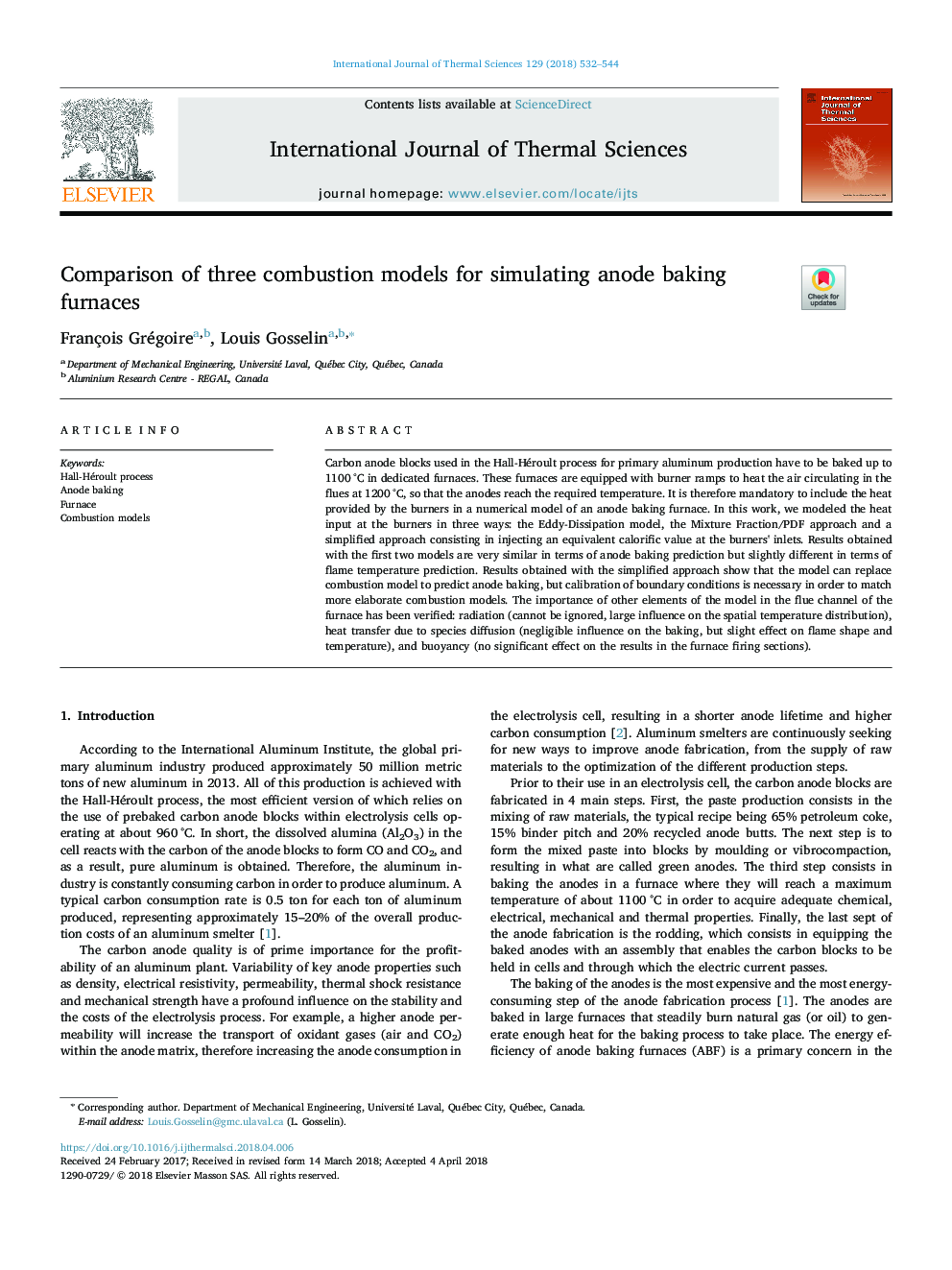| Article ID | Journal | Published Year | Pages | File Type |
|---|---|---|---|---|
| 7060742 | International Journal of Thermal Sciences | 2018 | 13 Pages |
Abstract
Carbon anode blocks used in the Hall-Héroult process for primary aluminum production have to be baked up to 1100â¯Â°C in dedicated furnaces. These furnaces are equipped with burner ramps to heat the air circulating in the flues at 1200â¯Â°C, so that the anodes reach the required temperature. It is therefore mandatory to include the heat provided by the burners in a numerical model of an anode baking furnace. In this work, we modeled the heat input at the burners in three ways: the Eddy-Dissipation model, the Mixture Fraction/PDF approach and a simplified approach consisting in injecting an equivalent calorific value at the burners' inlets. Results obtained with the first two models are very similar in terms of anode baking prediction but slightly different in terms of flame temperature prediction. Results obtained with the simplified approach show that the model can replace combustion model to predict anode baking, but calibration of boundary conditions is necessary in order to match more elaborate combustion models. The importance of other elements of the model in the flue channel of the furnace has been verified: radiation (cannot be ignored, large influence on the spatial temperature distribution), heat transfer due to species diffusion (negligible influence on the baking, but slight effect on flame shape and temperature), and buoyancy (no significant effect on the results in the furnace firing sections).
Keywords
Related Topics
Physical Sciences and Engineering
Chemical Engineering
Fluid Flow and Transfer Processes
Authors
François Grégoire, Louis Gosselin,
